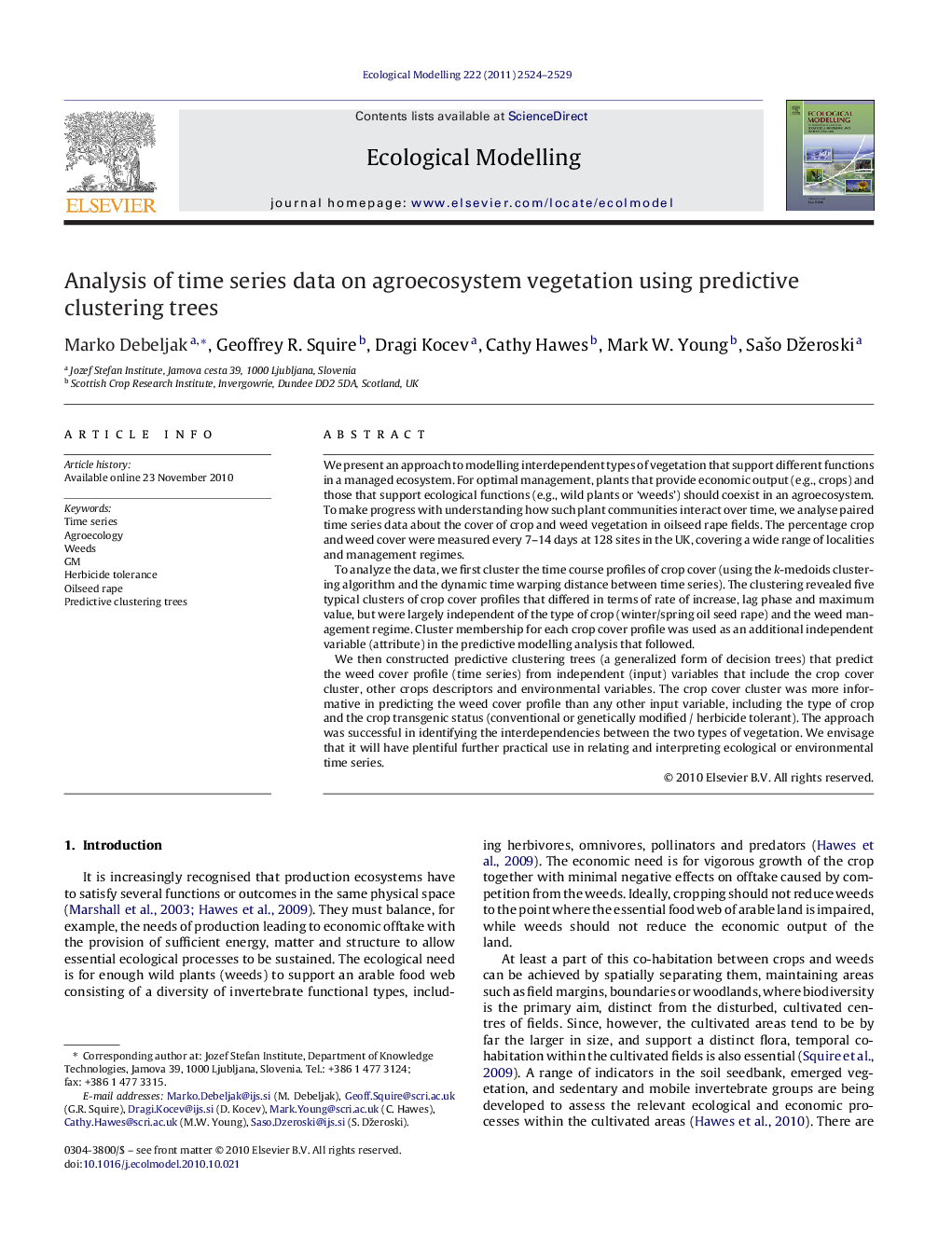| کد مقاله | کد نشریه | سال انتشار | مقاله انگلیسی | نسخه تمام متن |
|---|---|---|---|---|
| 4376892 | 1303398 | 2011 | 6 صفحه PDF | دانلود رایگان |

We present an approach to modelling interdependent types of vegetation that support different functions in a managed ecosystem. For optimal management, plants that provide economic output (e.g., crops) and those that support ecological functions (e.g., wild plants or ‘weeds’) should coexist in an agroecosystem. To make progress with understanding how such plant communities interact over time, we analyse paired time series data about the cover of crop and weed vegetation in oilseed rape fields. The percentage crop and weed cover were measured every 7–14 days at 128 sites in the UK, covering a wide range of localities and management regimes.To analyze the data, we first cluster the time course profiles of crop cover (using the k-medoids clustering algorithm and the dynamic time warping distance between time series). The clustering revealed five typical clusters of crop cover profiles that differed in terms of rate of increase, lag phase and maximum value, but were largely independent of the type of crop (winter/spring oil seed rape) and the weed management regime. Cluster membership for each crop cover profile was used as an additional independent variable (attribute) in the predictive modelling analysis that followed.We then constructed predictive clustering trees (a generalized form of decision trees) that predict the weed cover profile (time series) from independent (input) variables that include the crop cover cluster, other crops descriptors and environmental variables. The crop cover cluster was more informative in predicting the weed cover profile than any other input variable, including the type of crop and the crop transgenic status (conventional or genetically modified / herbicide tolerant). The approach was successful in identifying the interdependencies between the two types of vegetation. We envisage that it will have plentiful further practical use in relating and interpreting ecological or environmental time series.
Journal: Ecological Modelling - Volume 222, Issue 14, 24 July 2011, Pages 2524–2529